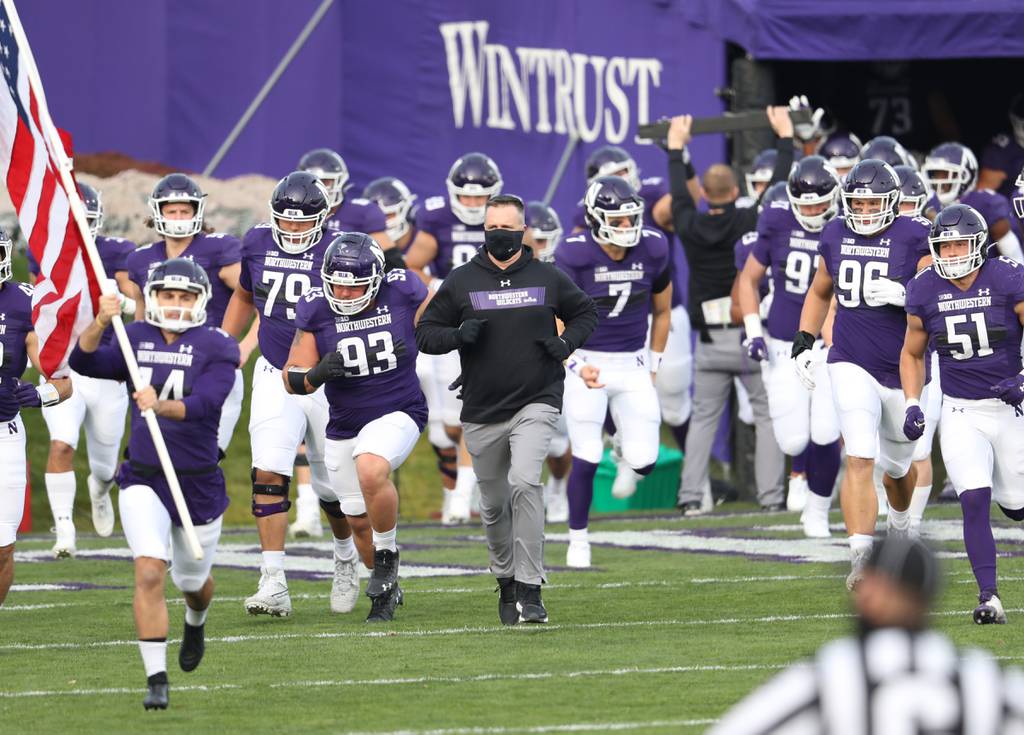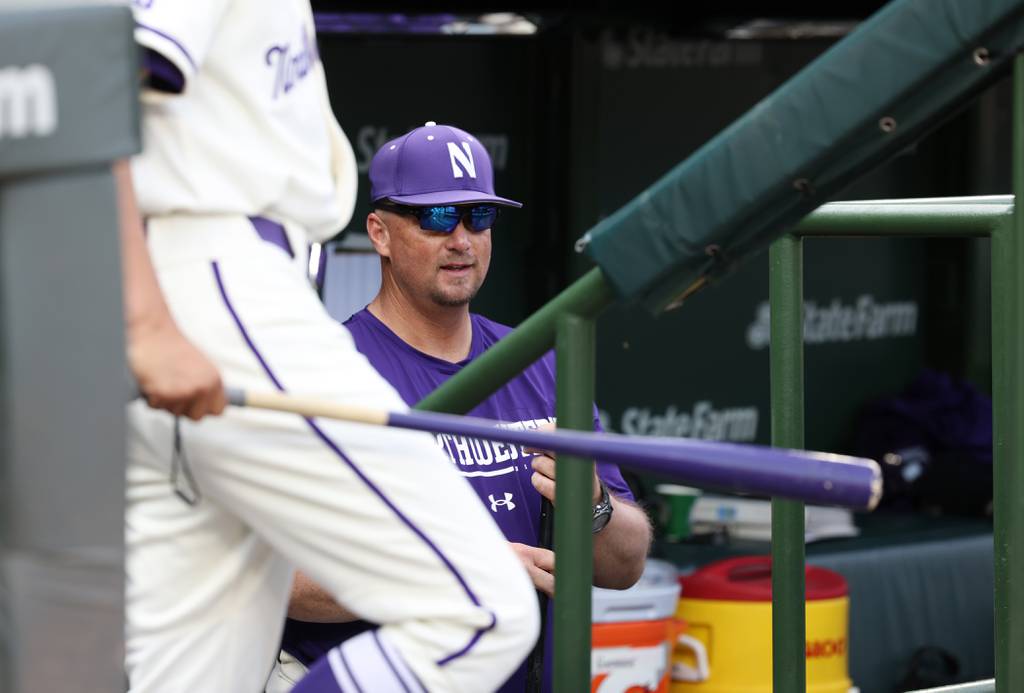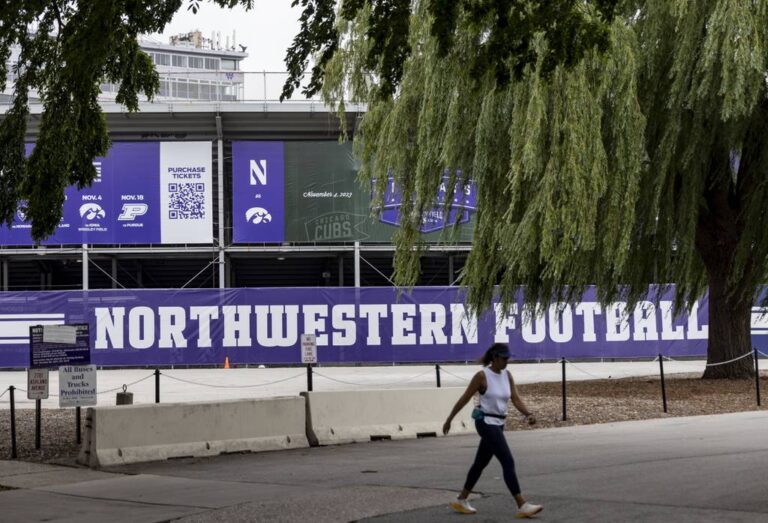Northwestern University’s anti-hazing policies and prevention tools are extensive, including an online hazing education course all incoming undergraduates are required to complete during their first term of enrollment.
Despite these measures, an investigation of hazing by university football players recently revealed a toxic team culture that persisted for years, unchecked. At least 11 current or former football student-athletes “acknowledged that hazing has been ongoing within the football program,” including “nudity and sexualized acts of a degrading nature” that team members were forced to participate in, according to a university statement released Monday.
In a letter to administrators, a half-dozen professors called for greater transparency of the investigation’s findings and more accountability of the athletic department, as well as university support for students who endured hazing or trauma.
“We see these students in our classes; we have contact with them all the time. We hate to think that this is what they’re going through elsewhere on campus,” said Northwestern history professor Amy Stanley, who signed the letter, sent Monday.
As the Northwestern community grapples with fallout from the scandal, experts say policies and training often aren’t enough to break the cycle of hazing, as these rituals are many times long-standing and ingrained in the culture of teams or organizations.
Victims can be afraid to come forward because they face ostracism, disbelief or retaliation; sometimes those who were hazed won’t acknowledge that the behaviors or treatment amounted to hazing, said Susan Lipkins, a New York-based psychologist and expert witness in hazing lawsuits.
“Hazing is a process used by groups to maintain the hierarchy or to discipline,” she said. “So hazing is always based on a tradition. Some people call it a rite of passage. And it becomes hazing when that tradition is either physically or psychologically harmful, or potentially harmful.”
“One thing we’ve found that continues to emerge in study after study that we do is that there’s a real disconnect between students’ experiences of hazing and their willingness to label it as hazing,” said Elizabeth Allan, professor of higher education at the University of Maine, who has been researching hazing and prevention strategies since 2007.
She led a 2008 hazing study that surveyed more than 11,000 students at universities and colleges across the country.
More than half of all students polled who belonged to clubs, teams or organizations said they experienced behaviors that would meet the definition of hazing; yet at the end of the survey, when the students were asked if they had ever been hazed, only 1 in 10 responded affirmatively, she said.
Many students also reported that hazing was pervasive during high school, she said.
“So, they’re coming to college often having expectations about this being an expected, normal part of what happens,” Allan said.
Most definitions of hazing — including the one used by Northwestern — can include experiences or situations that are cast as optional, regardless of an individual’s willingness to participate.
This leads some people to claim the experience wasn’t hazing, because they were given the choice of whether to take part, Allan said.
“People who understand hazing also understand that choice is impeded by the fact that there’s so much peer pressure and such a desire to belong that it makes for a really coercive environment,” she said. “So there’s a lot of factors that contribute to this disconnect.”
Sometimes it can be difficult to recognize or admit that hazing is happening because the practice is concealed in euphemisms or code words, Allan said.
“You hear people say, ‘Oh no, that’s not hazing, that’s just a tradition,’ for example,” she said.
In the Northwestern football case, for instance, some former players recounted a practice that was allegedly referred to as “running.” In actuality, freshman players were being punished for on-field mistakes by getting restrained in a locker room by older players in masks, who would “dry-hump” the new players, according to reports in the Daily Northwestern.
Members of a group can become acclimated to hazing over time.
A player might join a team and, in order to be accepted by the group, the athlete is hazed; then they become a bystander as they watch other people get hazed, Lipkins said.
“Then eventually they have senior status and they do unto others what was done to them, because they feel they have the right and the duty to repeat the ritual,” she said.

Hazing can be complicated because the perpetrators were often once victims and the victims might become perpetrators, she explained.
“They’ve usually gone through the same kind of hazing,” she said. “It is my opinion that each time a hazing takes place, the perpetrators want to leave their own mark, so they usually increase something about the ritual. If alcohol is involved, they might increase the amount. If paddling is involved, they increase the degree or the quantity of paddling.”
Lipkins, who has been studying hazing and prevention for two decades, said she’s recently seen more sexualized acts incorporated into hazing.
“Part of the sexualized hazing is that (victims) have zero power, and that’s what hazing is about,” she said. “It’s about maintaining the power and the hierarchy and the pecking order and teaching the freshmen and the newbies that they have no power.”
Coaches can have a big impact on changing that culture — or they can make things worse.
Head football coach Pat Fitzgerald was fired Monday “for his failure to know and prevent significant hazing in the football program,” according to a university statement.
Fitzgerald said in a statement that he has retained an attorney, adding that “the overwhelming majority of players we coached, 99% to be precise, have provided positive feedback that affirms our efforts.”
But Lipkins said she believes it’s part of a coach’s job to know if players are being hazed, as well as prevent and quash the behavior.
“But as an expert witness in hazing cases, I would say 99% of the time, everyone involved including the coach, including the athletes, they maintain the code of silence,” she said. “And that code of silence is really strong.”
On some teams, “you have a coach who is very clear what the limits are, and there is no hazing,” she said.
“The culture will get changed when coaches and teams decide that’s not what they’re going to do and that’s not what they’re going to allow,” she added.
Stanley, the Northwestern history professor, said she supported the removal of Fitzpatrick. Yet she cautioned that one personnel move doesn’t address a deeper “cultural problem” in the athletic department.
Jessica Winegar, anthropology professor and another co-author of the faculty letter, agreed, pointing to a pattern of allegations regarding Northwestern athletics that she called indicative of a problematic culture within the whole department.
Two years ago, a Northwestern cheerleader filed a lawsuit alleging she was repeatedly groped and harassed by drunken fans and alumni during university events, adding that older men would touch her breasts and buttocks over her uniform. The suit claimed the cheer head coach required cheerleaders to mingle with wealthy donors to help the school’s finances.
“(The) cheerleaders were being presented as sex objects to titillate the men that funded the majority of Northwestern’s athletics programs,” the lawsuit said. “After all, the happier these men were, the more money the university would receive from them.”
Northwestern’s first-year head baseball coach, Jim Foster, also faces allegations of bullying and abusive behavior, complaints that recently ignited a human resources investigation.
“Just getting rid of (Fitzpatrick) is not going to solve what seems to be a pervasive problem,” Stanley said. “It’s a much bigger problem that is not going to be satisfied by firing one person.”

Allan said anti-hazing policies are important, but often not enough to eradicate the behavior. She’s a proponent of what she called “the science of the positive,” which includes creating training and workshops centered around what healthy groups look like and how to welcome new members in positive ways, as well as quickly identifying signs of an unhealthy organization.
Chicago Tribune Sports
Weekdays
A daily sports newsletter delivered to your inbox for your morning commute.
There’s also value in correcting myths, she said. A lot of students mistakenly believe their peers think hazing is acceptable; but when you survey students, that’s not the case, she said.
“If you can do a campaign to reveal the true data, that can help to shift student perceptions of what their peers think and they’re more likely to speak out then.”
It’s also important to get students to grasp the consequences of hazing, including physical harm and long-term impacts on mental health, she added.
Statistics cited by the NCAA — which were based on Allan’s research — show the majority of students who experienced hazing perceived it negatively; 69% disagreed that hazing made them feel more a part of the organization or team and 78% disagreed that they “felt a sense of accomplishment” afterward.
“We still have a long way to go in terms of prevention of hazing,” Allan said. “But strides are being made. Yet what we need is for there to be more understanding of the harm and potential harm of hazing. It’s something that can have lifelong consequences both in terms of physical, bodily harm and mental health and well-being.”







